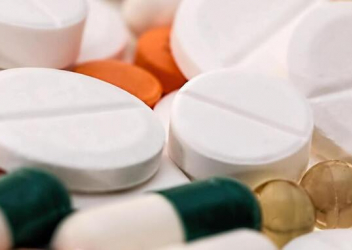Research In Action
Research In Action
Breadcrumb

The crisis of opioid overdoses in the US has reached epidemic proportions.To prevent death by reversing these overdoses, naloxone is often administered in community settings.This opioid antagonist medication, also known as Narcan® and Evzio®, has been shown to be safe, easy to administer, and effective in reducing opioid overdoses; however, little is known about the role of schools and school nurses in using naloxone to prepare for treating overdoses.
To gain a better understanding of access to, administration of, and barriers to the use of naloxone in schools, I recently conducted an online survey with my Penn Nursing colleagues Jennifer Pinto-Martin, PhD, MPH; Peggy Compton, PhD, RN, FAAN; Madeleine Parikh, BSN; and Zachary Meisel, MD, MPH, MSHP, of the Perelman School of Medicine at the University of Pennsylvania.Through a partnership with the Pennsylvania Association of School Nurses and Practitioners (PASNAP), we recruited 362 school nurses from 56 of Pennsylvania’s 67 counties (both urban and rural) and from elementary, middle, and high school settings to complete the survey.
Our findings were recently published in Public Health Nursing and reveal that important barriers to access and use of naloxone in schools still exist:
- We found that 54% of school nurses had a supply of naloxone at their school; of those that did, about 5% reported its use at their school.
- For the school nurses that did not have naloxone at their school, they cited the following barriers:
- lack of school board and/or school administration support
- the belief that the medication was not needed at their school
- lack of funding
We carried out our study at a unique time: Through a special program, the state of PA offered high schools the opportunity to apply for a free 2-dose kit of naloxone for their school. Unfortunately, this program is no longer available, and it will be important to see if schools continue to maintain a supply of naloxone or if barriers to access increase without this public health resource.
States Vary on School Health Standards
Although the National Association of School Nurses endorses the presence of naloxone in schools, not all states in the US have the same standards of school nursing practice for its supply and administration in schools. States also vary with respect to their State Department of Education provisions related to school health.
Naloxone should be available in schools as a public safety measure not just for students, but also for teachers, staff, parents, and others on school grounds who may be at risk for an opioid overdose and in need of emergency response. Just as school nurses maintain a supply of Epipens or automated external defibrillators (AEDs), naloxone should follow as another form of emergency preparedness.
As a former school nurse, I’ve long been interested in the role school nurses play in emergency preparedness for injury prevention, as well as in setting the example for positive norms around healthy behaviors. With naloxone available in schools, these clinicians have the opportunity to save lives by preventing opioid overdoses and by reducing the stigma around substance use. I applaud the Penn Injury Science Center for supporting this work to help those on the frontlines of the opioid epidemic provide much-needed care in schools.




